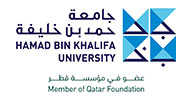How can MT and PE help literature cross borders and reach wider audiences: A Case Study
- Dr Vilelmini Sosoni (Ionian University),
- Dr Giorgos Mikros (Hamad Bin Khalifa University, HBKU),
- Ms Kelly Polychroniou (Boston University),
- Dr Vassilis Manoussakis (University of Patras)
Recently, research has shed some light on the usability of machine translation (MT) in literary texts (Toral, Wieling, and Way 2018).
MT might help literary translators when it comes to productivity,
Translators believe that the “more creative” the literary text, the less useful MT is (Moorkens et al. 2018) and that human translation is preferred by readers in comparison with post edited MT output and MT output (Guerberof and Toral 2020; Guerberof and Toral 2022).
Deliverables
- A comprehensive literature review on MT, evaluation and stylometric methods in the context of literary translation
- The collected dataset, including the source text, MT output and final post-edited book Tango in Blue Nights (2024) in English
- A detailed protocol for post-editing literary texts
- A detailed report on the evaluation carried out, i.e. automatic evaluation, human evaluation and stylometric-based evaluation
- A conference paper and journal article presenting the findings and their implications for the fields of MT and literature.
- An event outlining and showcasing the project’s outcomes at Boston University. Excerpts from the book will be read and discussed. The author and the researchers will showcase the methodology used, the challenges faced, the strengths and weaknesses of the MT output, the relation between the original and the translation and the author will reflect on the process and the final product. The students will discuss their role as post-editors, their experience from collaborative working, and will express their views on creativity.
Impact
- Insights into the performance of MT for translating literary/creative texts.
- Comprehensive understanding of the system’s strengths and limitations as regards the translation of literary/creative texts.
- Discussions of the potential benefits and challenges of using MT to make literary works more accessible across linguistic and cultural boundaries.
- Interdisciplinary collaborations between computational linguistics and literary translation studies in advancing the field of MT for creative and artistic purposes.
- Use of the stylometric analysis framework for other language pairs, creative genres, and MT systems.
- Specialized training of post-editors with a clearly outlined PE protocol for literary works.
- Collaboration between authors, translators and post-editors to facilitate translation and dissemination of literature across the globe.







